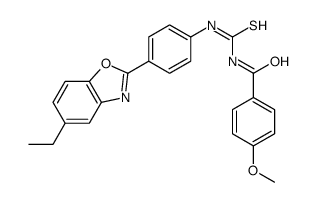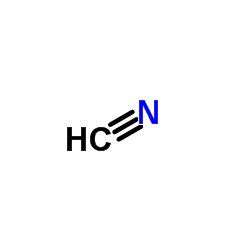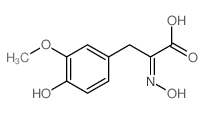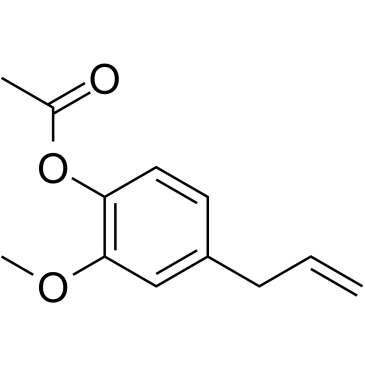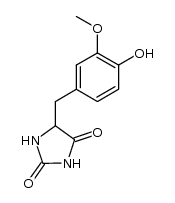星空app:7636-26-2
| Name | 2-Amino-3-(4-hydroxy-3-methoxyphenyl)propanoic acid |
|---|---|
| Synonyms |
3-Methoxytyrosine
3-Methoxy-D,L-tyrosine 2-amino-3-(4-hydroxy-3-methoxyphenyl)propanoic acid 3-Methoxy-tyrosine Tyrosine, 3-methoxy- 3-METHOXY-DL-TYROSINE UNII:SO86T1OB2P 3-O-Methyldopa |
| Description | 3-O-Methyl-DL-DOPA is an endogenous metabolite present in Cerebrospinal_Fluid that can be used for the research of Epilepsy, Purine Nucleoside Phosphorylase Deficiency and Aromatic L Amino Acid Decarboxylase Deficiency[1][2][3][4]. |
|---|---|
| Related Catalog | |
| In Vitro | Endogenous metabolites is defined as those that are annotated by Kyoto Encyclopedia of Genes and Genomes as substrates or products of the ~1900 metabolic enzymes encoded in our genome. It is clear in the body of literature that there are documented toxic properties for many of these metabolites[1]. |
| References |
[1]. Lee N, et al. Endogenous toxic metabolites and implications in cancer therapy. Oncogene. 2020 Aug;39(35):5709-5720. [2]. Darin N, et al. Mutations in PROSC Disrupt Cellular Pyridoxal Phosphate Homeostasis and Cause Vitamin-B6-Dependent Epilepsy. Am J Hum Genet. 2016 Dec 1;99(6):1325-1337. [3]. Ormazabal A, et al. Pyridoxal 5'-phosphate values in cerebrospinal fluid: reference values and diagnosis of PNPO deficiency in paediatric patients. Mol Genet Metab. 2008 Jun;94(2):173-7. [4]. Abdenur JE, et al. Aromatic l-aminoacid decarboxylase deficiency: unusual neonatal presentation and additional findings in organic acid analysis. Mol Genet Metab. 2006 Jan;87(1):48-53. |
| Density | 1.3±0.1 g/cm3 |
|---|---|
| Boiling Point | 407.3±45.0 °C at 760 mmHg |
| Molecular Formula | C10H13NO4 |
| Molecular Weight | 211.214 |
| Flash Point | 200.1±28.7 °C |
| Exact Mass | 211.084457 |
| PSA | 92.78000 |
| LogP | 0.08 |
| Vapour Pressure | 0.0±1.0 mmHg at 25°C |
| Index of Refraction | 1.591 |
|
Material Safety Data Sheet
Section1. Identi?cation of the substance Product Name: 3-Methoxy-DL-tyrosine Synonyms: Section2. Hazards identi?cation Harmful by inhalation, in contact with skin, and if swallowed. Section3. Composition/information on ingredients. Ingredient name:3-Methoxy-DL-tyrosine CAS number:7636-26-2 Section4. First aid measures Skin contact:Immediately wash skin with copious amounts of water for at least 15 minutes while removing contaminated clothing and shoes. If irritation persists, seek medical attention. Eye contact:Immediately wash skin with copious amounts of water for at least 15 minutes. Assure adequate ?ushing of the eyes by separating the eyelids with ?ngers. If irritation persists, seek medical attention. Inhalation:Remove to fresh air. In severe cases or if symptoms persist, seek medical attention. Ingestion:Wash out mouth with copious amounts of water for at least 15 minutes. Seek medical attention. Section5. Fire ?ghting measures In the event of a ?re involving this material, alone or in combination with other materials, use dry powder or carbon dioxide extinguishers. Protective clothing and self-contained breathing apparatus should be worn. Section6. Accidental release measures Personal precautions: Wear suitable personal protective equipment which performs satisfactorily and meets local/state/national standards. Respiratory precaution:Wear approved mask/respirator Hand precaution:Wear suitable gloves/gauntlets Skin protection:Wear suitable protective clothing Eye protection:Wear suitable eye protection Methods for cleaning up: Mix with sand or similar inert absorbent material, sweep up and keep in a tightly closed container for disposal. See section 12. Environmental precautions: Do not allow material to enter drains or water courses. Section7. Handling and storage Handling:This product should be handled only by, or under the close supervision of, those properly quali?ed in the handling and use of potentially hazardous chemicals, who should take into account the ?re, health and chemical hazard data given on this sheet. Store in closed vessels, refrigerated. Storage: Section8. Exposure Controls / Personal protection Engineering Controls: Use only in a chemical fume hood. Personal protective equipment: Wear laboratory clothing, chemical-resistant gloves and safety goggles. General hydiene measures: Wash thoroughly after handling. Wash contaminated clothing before reuse. Section9. Physical and chemical properties Appearance:Not speci?ed Boiling point:No data No data Melting point: Flash point:No data Density:No data Molecular formula:C10H13NO4 Molecular weight:211.2 Section10. Stability and reactivity Conditions to avoid: Heat, ?ames and sparks. Materials to avoid: Oxidizing agents. Possible hazardous combustion products: Carbon monoxide, nitrogen oxides. Section11. Toxicological information No data. Section12. Ecological information No data. Section13. Disposal consideration Arrange disposal as special waste, by licensed disposal company, in consultation with local waste disposal authority, in accordance with national and regional regulations. Section14. Transportation information Non-harzardous for air and ground transportation. Section15. Regulatory information No chemicals in this material are subject to the reporting requirements of SARA Title III, Section 302, or have known CAS numbers that exceed the threshold reporting levels established by SARA Title III, Section 313. SECTION 16 - ADDITIONAL INFORMATION N/A |
| Risk Phrases | 22-36/37/38 |
|---|---|
| Safety Phrases | 22-26-36/37/39 |
| RIDADR | NONH for all modes of transport |
|
~% 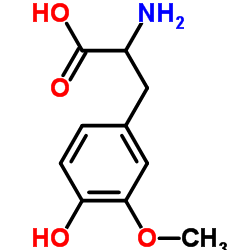
7636-26-2 |
| Literature: Journal of the Chemical Society, , p. 1692,1694 |
|
~% 
7636-26-2 |
| Literature: Journal of Organic Chemistry, , vol. 23, p. 27,32 |
|
~% 
7636-26-2 |
| Literature: Journal of the Chemical Society, , p. 1795,1799 |
|
~% 
7636-26-2 |
| Literature: Journal of the Chemical Society, , p. 1692,1694 |
|
~% 
7636-26-2 |
| Literature: Journal of the Chemical Society, , p. 1795,1799 |
|
~% 
7636-26-2 |
| Literature: Journal of the American Chemical Society, , vol. 35, p. 1611 |
| Precursor 7 | |
|---|---|
| DownStream 0 | |

